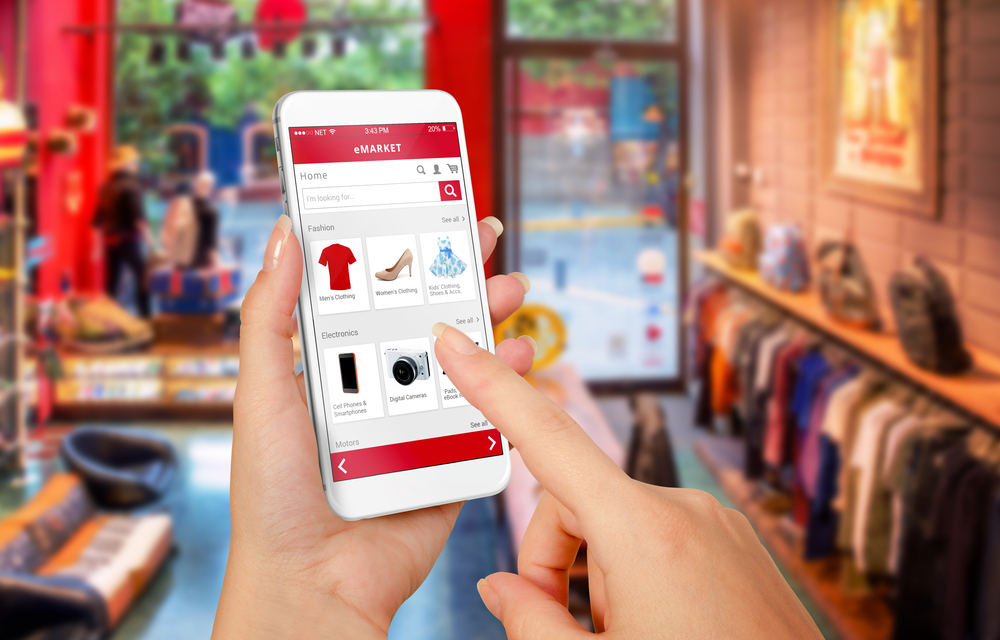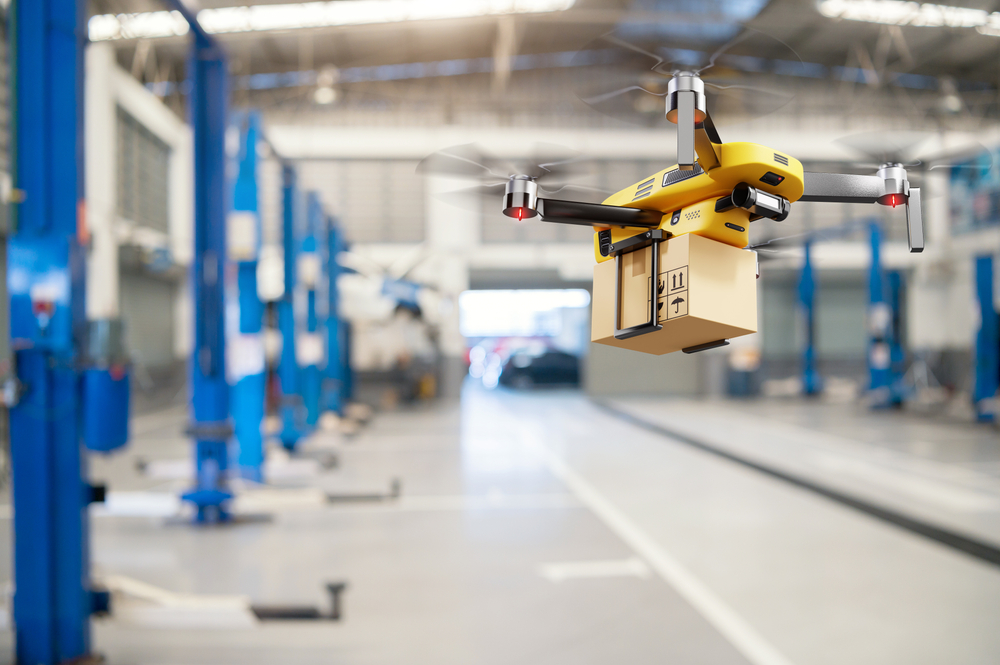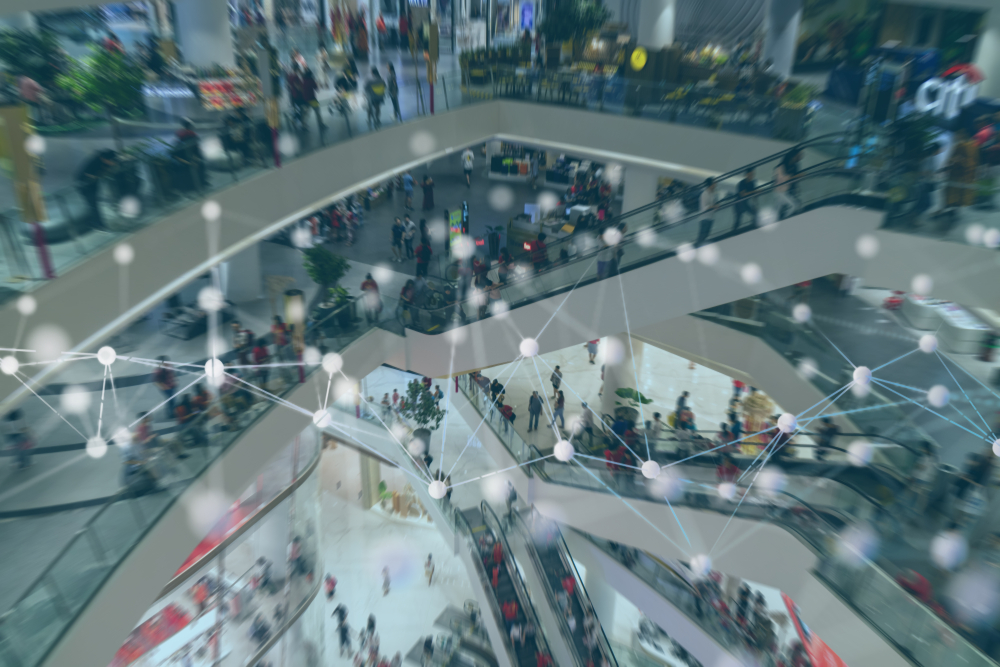2024年6月21日9:53 AM
What is DX in the retail industry? A thorough explanation of the changes and examples brought about by DX

What is DX in the retail industry? A thorough explanation of the changes and examples brought about by DX
In recent years, the consumer purchasing process has undergone major changes.
The wave of digitalization currently driving the retail industry, such as the spread of e-commerce sites and the introduction of unmanned registers, shows no signs of stopping.
In this article, we will take a detailed look at the digital transformation that the retail industry should pursue, including “What is digital transformation in the retail industry?” “The current situation and challenges of the retail industry,” and “The benefits and changes of digital transformation in the retail industry.”.
We also introduce examples of retail industry DX that have been implemented in actual companies, so if you are considering DX, be sure to refer to it.
What is Digital Transformation in the Retail Industry?

Digital transformation in the retail industry refers to efforts to create new systems using AI and IoT for all retail services and operations.
Since the spread of COVID-19 in 2020, people’s purchasing processes and customer needs have changed dramatically.
There is an urgent need for a fundamental review of management structures in the retail industry, including the introduction of shopping via e-commerce sites and unmanned registers with contactless payments.
There is no doubt that digital transformation (DX) will be essential for retailers to increase sales and reduce operating costs in order to survive in the future.
Currently, the retail industry is moving toward operational improvements using digital tools, but the reality is that this is not enough to bring about business transformation through digitalization.
In the future, the retail industry is expected to introduce digital transformation into ordering systems, inspection, and billing processing.
As customer behavior and needs become more diverse, it is becoming increasingly important for digital transformation in the retail industry to accelerate.
Current status and challenges of digital transformation in the retail industry

Although digitalization and the use of IT in the retail industry are becoming more widespread, it cannot yet be said that they are sufficient.
So what is the current state of DX in the retail industry, and what are the challenges it faces?
Current status and challenges of digital transformation in the retail industry: 1. Aging of existing systems
There are many companies in the retail industry that continue to use old systems, and there are many cases where DX promotion does not go smoothly due to the aging of these existing systems.
If the problem is simply that the system is outdated, the problem can be solved by simply replacing the entire system. However, if no one in the company understands how the existing system works, meaning the system has become a black box, then there is a problem.
The black-box nature of systems creates a barrier to introducing new systems, making it difficult to transfer data properly and posing major challenges such as the enormous costs and time required to share data.
Current status and challenges of digital transformation in the retail industry ② Lack of human resources
The retail industry is facing a serious labor shortage.
According to a survey on corporate trends regarding labor shortages published by Teikoku Databank Ltd., approximately half of all retail companies are experiencing labor shortages.
Due to Japan’s declining birthrate and aging population, labor shortages are also an issue in other industries, so securing labor for the retail industry, especially DX talent to advance DX, is an urgent task.
Given the current labor shortage, it is extremely difficult to secure the new IT personnel necessary to promote digital transformation.
Current status and challenges of digital transformation in the retail industry 3. Responding to diversifying consumer needs
One of the reasons why digital transformation is urgently needed in the retail industry is the need to respond to diversifying consumer needs.
As the internet became more widespread, people began shopping online at a rapid pace, but the COVID-19 pandemic has only accelerated this trend, with people of all ages now using e-commerce sites.
Also, thanks to the Internet, which can be searched from anywhere in the country, it is now possible to obtain information about products and services even if you are far away.
For example, some consumers check out products in physical stores and then purchase them on e-commerce sites, and responses to consumer needs are becoming more diverse.
Benefits of Digital Transformation in the Retail Industry

We will explain the benefits of promoting DX in the retail industry.
Benefits of DX in the retail industry: 1. Improving customer satisfaction
The first benefit is that it is expected to improve customer satisfaction.
The retail industry is facing a chronic labor shortage, which is putting increasing strain on employees.
This can easily lead to long working hours, which can make employees physically and mentally exhausted, leading to employees becoming ill or making more mistakes due to a lack of concentration, ultimately resulting in a decline in service quality.
By introducing self-checkouts and payment systems via smartphone apps, the burden on employees is reduced, allowing them to focus on providing service to customers.
In addition, based on the data obtained at the time of payment, you can accurately analyze which products are popular, what are the busiest times, who is the target demographic, and so on, and use this information in your sales strategy.
Benefits of DX in the retail industry 2. Labor-saving operations possible through operational efficiency
By advancing digital transformation in the retail industry, it is possible to reduce the number of staff required by improving operational efficiency.
For example, in the retail industry, purchasing and inventory management are important tasks, so companies that primarily use analog operations spend a significant amount of time on these tasks.
By using digital technology for inventory management, you can get accurate inventory in real time and manage it centrally across multiple stores.
Furthermore, for the retail industry, despicable shoplifting acts are a source of pressure on businesses.
By introducing a surveillance system using AI cameras and setting it to sound an alarm when it detects anyone behaving suspiciously, shoplifting and other dangerous behavior can be responded to more smoothly, and the number of security guards and employees can be reduced.
Changes brought about by digital transformation in the retail industry

Next, we will explain the changes brought about by digital transformation in the retail industry.
What will change with DX in the retail industry? 1. Store operations
In the retail industry, digital transformation can also be applied to operating physical stores.
For example, automating inventory management using AI can reduce the burden on employees and prevent over-ordering and unsold goods.
By introducing unmanned registers and cashless payment, there will be no need to worry about customers having to wait to pay due to a lack of staff during busy times.
Changes in the retail industry due to digital transformation ② E-commerce site management
It is no exaggeration to say that e-commerce sites are the most important digital transformation element for the retail industry.
E-commerce sites not only provide products and services but also enable the collection and analysis of purchasing and browsing data.
By utilizing this data, we will be able to propose products and services that are tailored to the needs of each individual customer.
In addition, the disadvantage of not being able to actually touch the product is covered by including a review function that allows customers who have purchased the product to write reviews.
What will change with digital transformation in the retail industry? 3. Marketing
Customer data obtained by advancing digital transformation in the retail industry can be used for future marketing.
For example, by installing a network camera equipped with an AI engine, it will be possible to accurately obtain customer attributes such as the gender and age of customers, which will be useful for marketing strategies such as analyzing customer pathways.
Changes in the retail industry due to digital transformation #4: Logistics
DX excels at taking action that is “fast” and “accurate.”
Robotizing warehouse operations will not only alleviate labor shortages but will also enable shipping to be carried out more quickly and accurately, reducing human errors such as ordering mistakes.
Additionally, experiments are underway to use drones for some deliveries, and if this is put into practical use, it will provide a solution to the logistics problems that will come in 2024.
What’s changing with digital transformation in the retail industry: OMO
“OMO (Online Merges with Offline)” is considered to be a key point for survival in the future retail industry.
Traditionally, physical stores (offline) and e-commerce sites (online) have been considered separate entities.
However, with the widespread use of the Internet, it is now common for customers to carry their smartphones and be online.
When you’re in a physical store, you’re still online, so there’s no need to think of online and offline as separate entities.
The concept of “OMO (Online Merges with Offline)” means merging online and offline without separating them.
This enables marketing strategies that transcend the boundaries between online and offline, such as promoting products on an e-commerce site based on data from purchases made in physical stores.
Digital transformation cases in the retail industry

There is a lot that can be achieved through digital transformation in the retail industry, but you may be wondering how to go about it.
Here, we will introduce three DX case studies from companies that have actually implemented DX in the retail industry.
Retail Industry DX Case Study ① Kirin Beverage Co., Ltd.
Kirin Beverage Co., Ltd., a leading Japanese soft drink manufacturer, is promoting the introduction of label-less and recycled PET bottles for its flagship product, Imaicha.
Amid growing calls for environmental conservation, Ikena Tea introduced the marketing tool “Go Insight” to clarify how its efforts were contributing to sales, visualize customer behavior patterns from the sales floor to purchase, and verify the effectiveness of having or not having in-store POP displayed.
As a result, it was found that stores that had installed in-store POP increased the number of times customers came into contact with “Ichibancha,” making this a case of DX that proved the effectiveness of appealing to environmental conservation.
DX Case Study in the Retail Industry② Heiwado Co., Ltd.
Heiwado Co., Ltd., which operates supermarkets mainly in Hikone City, Shiga Prefecture, has introduced a demand forecasting ordering system that utilizes AI.
Previously, ordering work was done manually, but this was not only time-consuming but also led to problems such as over-ordering and inventory shortages due to misjudgments.
So they implemented a digital transformation initiative by introducing an AI-based demand forecasting and ordering system that learns from past sales records, weather information, and other information to automatically order products.
The effect of this DX case was to reduce ordering time by 80%, and the time saved was used to promote communication with customers and create a better store.
DX Case Study in the Retail Industry 3: AEON Co., Ltd.
AEON Co., Ltd., which operates supermarkets throughout Japan, is a company that is actively promoting digital transformation.
Aeon has introduced an “air conditioning energy reduction system” that utilizes AI technology, which is an example of digital transformation that reduces carbon dioxide emissions.
By installing AI cameras and thermometers inside and outside the store and collecting data on things like foot traffic and room temperature through an “air conditioning energy reduction system,” we have achieved automatic adjustment of air volume and temperature settings based on AI air conditioning predictions.
If you are considering digital transformation, please contact MabuhayTech.
The spread of the Internet has dramatically changed our lives.
In particular, with the development of e-commerce sites, the sales process has become more diverse.
The retail industry, which is closely linked to our daily lives, is being forced to change in order to meet diversifying customer needs, and the introduction of DX is necessary as a means to achieve this.
Promoting digital transformation in the retail industry is expected to bring many benefits, including significantly reducing the time required for ordering and increasing customer satisfaction.
In actual cases of DX implementation, the appealing effects of DX have been proven, and many companies have achieved success by using demand forecasting ordering systems to significantly reduce ordering work.
MabuhayTech is a company based in the Philippines and Japan that provides software development services to Japanese companies.
In Japan, there is a demand to promote digital transformation in every industry.
However, there are not enough IT engineers in Japan, and the digital transformation is not progressing as expected.
There are many benefits to be gained from DX, including improved marketing and business efficiency and resolving labor shortages.
While DX in large companies tends to get all the attention, the benefits of DX are also great for small and medium-sized businesses.
MabuhayTech develops systems to promote digital transformation in all industries, regardless of company size, including the retail industry.
The Philippines is making a national effort to develop IT human resources, and there are many young, talented IT engineers.
DX is a society-wide transformation that is expected to solve the challenges facing Japanese companies, bring a brighter future to companies, improve customer satisfaction, and revitalize the Japanese economy as a whole.
If you have any requests regarding DX, such as “I want to transform my company through DX,” “I want to start with what I can do,” or “I want to introduce DX at a low cost,” please contact MabuhayTech.
First, let’s think together about what we can do.
Free consultation is here.
Latest Media Article
- What is DX in the retail industry? A thorough explanation of the changes and examples brought about by DX
- What are the benefits of using AI talent and AI models in advertising? Introducing actual cases
- What is AI-generated ad creative? Introducing what can be achieved and the recommended tools
- How to create an AI gravure model! A detailed explanation of how AI images are generated
- What is the effect of using AI in advertising? Introducing the benefits and use cases
Category
- News
 Recruitment
Recruitment
 Inquiry
Inquiry
Contact
Click here for job consultation. Please feel free to contact us!
Reception hours 9:00-17:00 (excluding weekends and year-end and New Year holidays)
Inquire on the web
Inquiry formContact us by phone
253-105-651